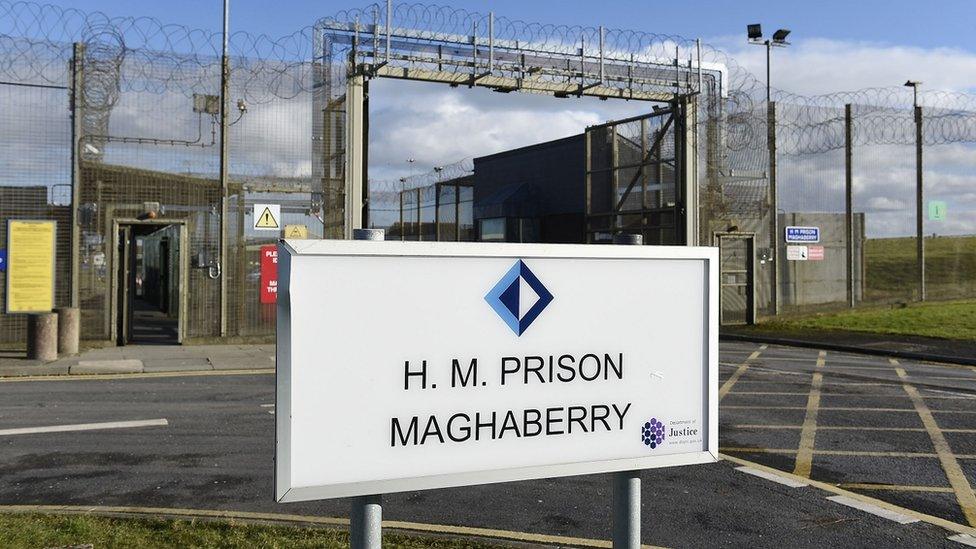Northern Ireland: Prison segregation costs more than 拢2m a year
- Published

MLAs have been told four landings at Magheraberry jail are used to segregate prisoners
More than 拢2m is spent every year segregating loyalist and republican prisoners in NI prisons.
Justice Minister Naomi Long confirmed the figure in response to an Assembly question from TUV MLA Jim Allister.
Twenty-three dissident republican and 19 loyalist prisoners were separated on four landings at Magheraberry prison, Mrs Long told MLAs.
A further three dissident republican female prisoners were segregated at Hydebank Wood jail.
The total cost of maintaining the segregation was 拢2.3m
If prisoners apply to the secretary of state to be segregated and meet the criteria then they must be accommodated, Mrs Long said.
She added: "The separated regime exists because of conditions in wider society create a need for the regime. Bringing about an end to the separated regime depends on our collective success in tackling paramilitarism, Criminality and organised crime."
She said the executive has an action plan which it is committed to implementing and said there is a focus on ending segregation in prisons.
Female prisoners in NI are held at Hydebank Wood
The minister also confirmed to North Antrim MLA Jim Allister that almost half a million pounds was spent preparing a landing to accommodate three dissident republican prisoners at Hydebank Wood.
She said 拢482,000 was spent preparing the landing at the prison's Fern House.
Extensive work was required to repurpose the unit and the work had to be completed within a two week period, she said.
"Structural, electrical and mechanical work was all required to enhance security and it was right that we ensure an adequate level of security was in place to manage the challenge presented by separation," Mrs Long said.
The minister insisted "less than 拢6,000" was spent on soft furnishing in the cells and a recreation room.
She said: "This is not in any shape or form about luxury or preferential treatment it is about decency and it is about security and managing a very difficult environment."
Accommodation that was previously used to segregate female prisoners is now being used as a mother and baby unit.
- Published30 March 2020
- Published9 June 2020